The Setting
The Battle of the Somme continued through the summer and fall of 1916. The Allies had hoped for a quick breakthrough on the German front. However, by the end of September, the Allies had gained fewer than eight kilometres of territory. Both sides had experienced large losses; each day of fighting averaged a combined 8500 casualties.
The Battle of the Transloy Ridges*, an offensive that took place from October 1-18, 1916, was a continuation of the Battle of the Somme. The Newfoundland Regiment's role in this offensive began on October 12. It was the Regiment's first action in the Somme region since Beaumont-Hamel.
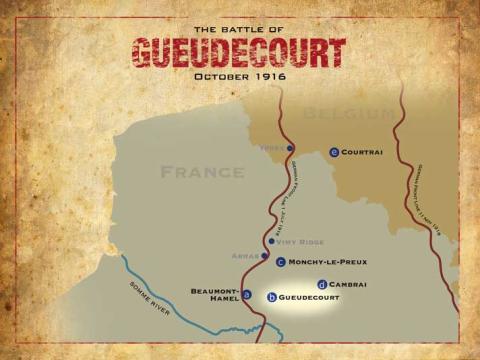
Gueudecourt, France
* The Battle of the Somme consisted of twelve separate battles, fought between July 1 and November 18, 1916.
The Plan
The role assigned to the 88th Brigade in the Battle of the Transloy Ridges was to seize two main German trenches near the village of Gueudecourt. The Newfoundland Regiment was to advance with the Essex Regiment on its left. Their first objective was the heavily fortified "Hilt Trench", 400 metres away. Once this was secured, the Regiment was to continue another 400 metres and capture the enemy's second-line "Grease Trench". This advance would use a new military tactic — the creeping barrage.
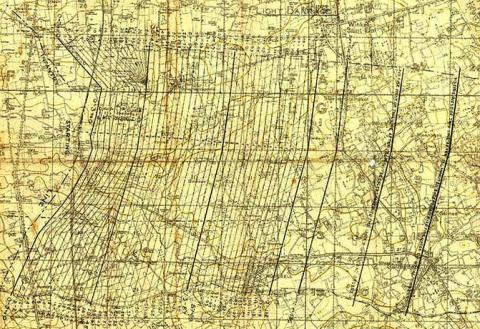
Creeping Barrage Map
Each line on the map represents the next movement of the troops. The troops were expected to move approximately 100 metres every two minutes.
The Action
The attack commenced at 1405. As the creeping barrage began, Companies "A" and "B" of the Newfoundland Regiment began to move forward with "D" and "C" Companies behind them. The plan was for the barrage to jump ahead forty-six metres each minute. The soldiers' instructions were to follow approximately forty-six metres behind it.
In the excitement and confusion of battle, many of the soldiers moved ahead too quickly. As a result, fifteen percent of the men were struck by fire from the barrage. Another fifteen percent fell from enemy fire before reaching their first objective. Despite this loss, the barrage was effective in hindering the Germans' ability to use their machine guns. The Regiment advanced to Hilt Trench. Finding little barbed wire in front of it, they used grenades and hand-to-hand fighting to seize control of it by 1430. To the Newfoundland Regiment's left, the Essex had also been successful in securing its part of Hilt Trench.

Bayonet
The Rooms Provincial Museum

Lee-Enfield Rifle
The Rooms Provincial Museum
The Essex and Newfoundland Regiments then began advancing toward their next objective. After moving forward ninety-one metres, heavy enemy fire forced the men from the Newfoundland Regiment to stop and dig a new defensive position. As they did, more than half of the men were killed or wounded. With continued German machine gun fire, the men were eventually forced to retreat to Hilt Trench.
Meanwhile, some of the Essex reached Grease Trench. However, with their left side unprotected, they were soon forced to turn back to Hilt Trench. (The advance by the 12th Division's 35th Brigade on the Essex's left had been stopped by uncut enemy wire.) At 1600, the Newfoundland Regiment learned that a German counterattack had forced the Essex Regiment to withdraw from their portion of Hilt Trench and retreat to their starting line.
The men from the Newfoundland Regiment moved quickly to take over the unoccupied part of the trench. They constructed a blockade between themselves and the Germans, further along the trench on their left. Within an hour, the Germans counterattacked with approximately 500 soldiers. The Regiment resisted this attack and several other smaller counterattacks throughout the early evening. At 2100, reinforcements began to arrive at Hilt Trench. However, the Regiment continued to hold the trench until they were relieved at 0300. They were then able to begin the two kilometre march back to the support trenches behind Gueudecourt to get food and sleep.
The Outcome
With the exception of the Newfoundland Regiment's success, little ground was gained for the British in their offensive on October 12. In fact, Brigadier-General Cayley later wrote to Newfoundland's Governor to report that the Newfoundland Regiment's success "was the more gratifying as it was the only real success recorded on that day." The Regiment's success, however, came at a heavy price: 120 Newfoundlanders and Labradorians were killed and 119 wounded.
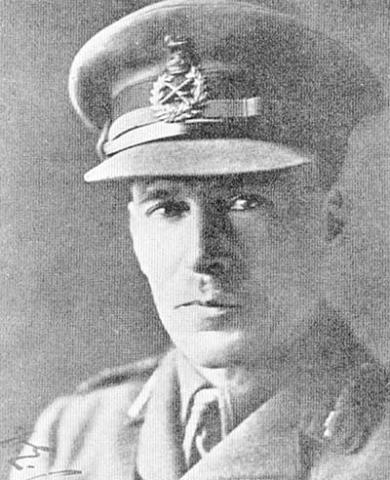
Brigadier-General Cayley
Book of Newfoundland. Newfoundland’s Part in the Great War by Captain Leo C. Murphy, page 357.
Gueudecourt Fatalities
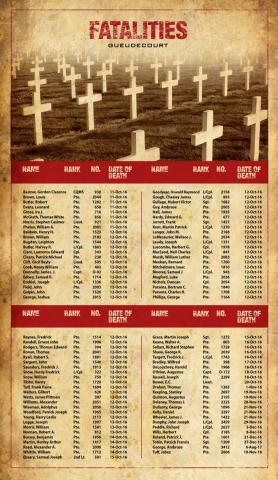
Gueudecourt Fatalities
The advance at Gueudecourt was the Regiment's last major action in the Battle of the Somme — although the Regiment did remain in the area for another two months providing relief for other units. The Newfoundland Regiment was then put on reserve, giving it a month of rest before heading back to the front line.
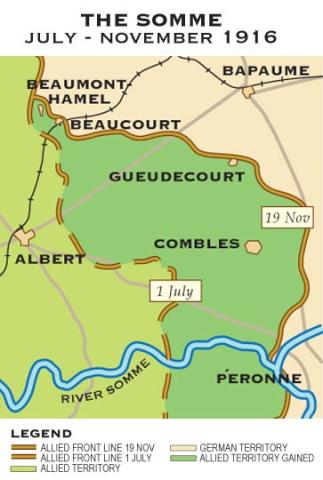
Territory Gained